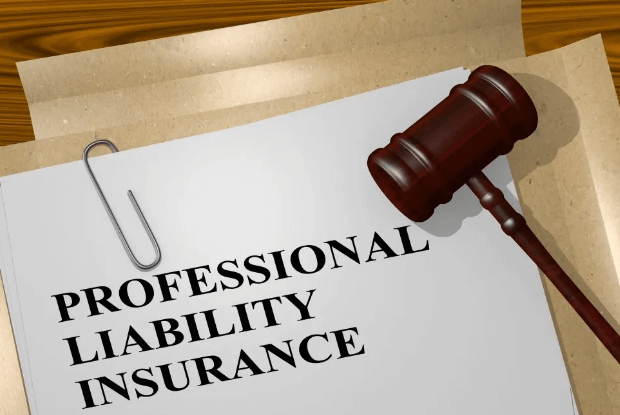How to Choose the Right Professional Liability Insurance Policy

Choosing an appropriate liability insurance policy is important for any professional or company that provides services. This type of insurance is also commonly referred to as errors and omissions (E&O) insurance and offers cover against alleged negligence and services not properly rendered. Without proper coverage, a mere slip can result in all sorts of lawsuits that can be financially damaging to your business or your career.
In every capacity – consultant, healthcare provider, or small business owner – you must understand the policy options. Below are some of the important factors that will assist you make the right choice and enable you to buy the right professional insurance policy.
1. Learn What Professional Liability Insurance Covers
Common claims include:
a. Errors or Omissions
Not delivering the services as agreed upon, or making a bad decision during the process of delivering the services.
b. Negligence
Duty of care not met and industry standards not followed properly.
c. Misrepresentation
Offering wrong or fake information or to give a wrong perception about a particular matter.
It may apply to professionals, including doctors, lawyers, architects and accountants, consultants and the likes—who may be vulnerable to these kinds of claims.
See also: Why Investment Property Management is Crucial for Long-Term Success
2. Evaluate Your Industry’s Hazards
Every industry has its own hazards. For instance, a doctor may be hit with malpractice suits, and similarly, an advisor can be taken to court for bad stock advice. When selecting the professional liability insurance policy, you should evaluate the particular risks that are related to your occupation.
There is also always the possibility to look for certain professions policies that will allow for better coverage. For instance, medical professional liability insurance policy may include certain risks related to healthcare practice, for instance medical malpractice. While one person may require comprehensive E&O coverage due to the nature of his/her work, another individual might only need a general policy; for example, a doctor may require a lot of coverage but a marketing consultant may only need general E&O policy.
3. Consider What Level of Coverage Limits Is Required
Coverage limits are the highest amount that your insurance policy will pay for damages. A policyholder should ensure that the limits of the policy chosen match their risk tolerance. Coverage limits generally come in two forms:
a. Per-Claim Limit
This refers to the maximum dollar limit paid out in settlement of a claim.
b. Aggregate Limit
That monetary amount stated on the policy is the amount that the insurer is willing to pay for almost all conceivable losses during the policy period.
For instance, you may make an insurance agreement for $1 million per occurrence and $2 million in total, it means the insurance company will compensate up to $1 million for a single occurrence, and less than or equal to $2 million for the entire time covered by the policy. You should assess risk and the above stated limits; this will enable you to determine if the limits are adequate to cater for your exposures. High risk exposure businesses or those that belong to high claim frequency industries may require higher limits.
4. Think about the Policies Claims-Made vs. Occurrence Basis
Most professional liability insurance policies are bought on a claims-made or occurrence basis:
a. Claims-Made Policy
This policy pays only when such a claim is made while the policy is valid and in force. If the claim is reported after the termination of the policy, even if the incident occurred during the time of having the policy, it will not be honored unless the policyholder has extra coverage.
b. Occurrence Policy
This kind of policy covers reports involving incidents that happened while the policy is active, even if the claim is reported after the policy expires.
A claims-made policy can be less expensive, but you can only report claims within the policy period without continuous coverage. However, an occurrence policy can provide a broader coverage but at a higher premium.
5. Review Policy Exclusions
In every professional liability insurance policy, you will find some exceptions that will not be treated as per the policy. Common exclusions include:
a. Intentional acts
If you seek to harm someone or defraud them, then this policy will not be of any help to you.
b. Illegal acts
It will not cover claims for any unlawful conduct or actions being performed.
c. Employee disputes
A plan may not have coverage of employment rights abuses like dismissal or harassment.
6. Consider the Financial Soundness of the Insurer
The Insurance company ought to have a good reputation of handling claims and should be also in a position to meet its obligations fully. You want an insurer who will communicate with you, and who will remain transparent as the process proceeds.
7. Consider Additional Endorsements or Riders
In some cases it is possible that available standard professional liability insurance policy will not be sufficient for your needs. In such cases, you can opt for endorsements or riders to increase the coverage and protect you. For example:
a. Cyber Liability Endorsement
This endorsement will take care of data breaches and cyber attacks if your business deals with sensitive information belonging to clients.
b. Disciplinary Proceedings Coverage
Individuals who work in a variety of highly controlled industries, including healthcare and law, may have regulatory bodies take action against their licenses. Some policies have provisions for legal expenses and anything that has to do with your defense in these proceedings.
Conclusion
In selecting the appropriate professional liability insurance policy, you need to consider the following factors: the kind of industry, the kind of coverage required and the market reputation of the insurance company, among other things. It takes knowing these elements of policies and considering multiple choices to ensure that the highest level of protection for your business or professional practice is achieved.
Keeping your policy up to date protects you in relation to your business, particularly as your business evolves over time, thereby allowing you to get on with the business of running your business.





